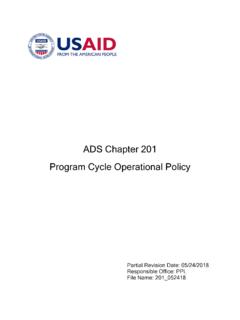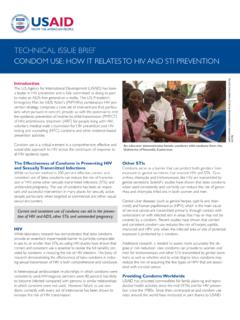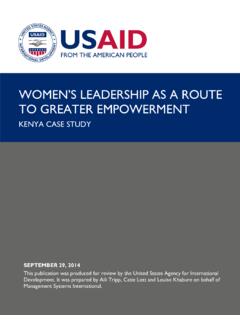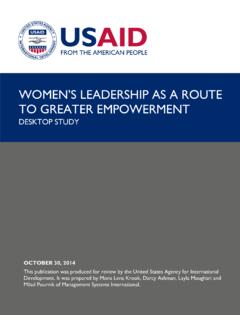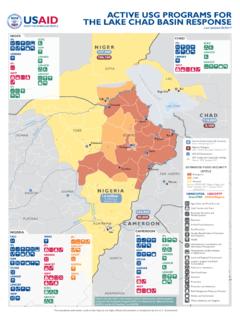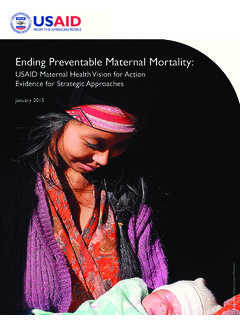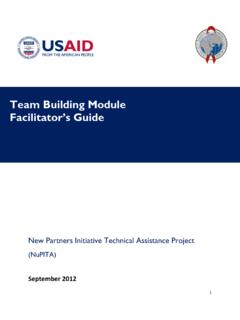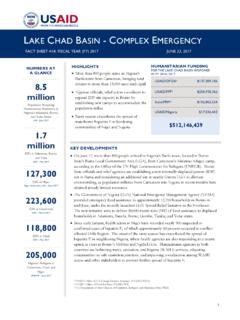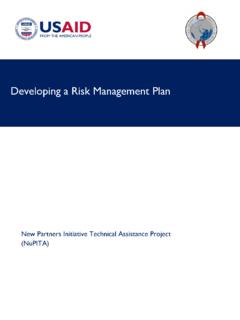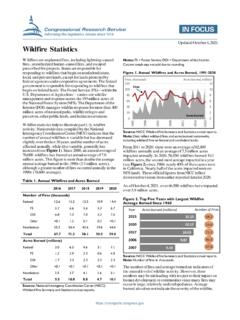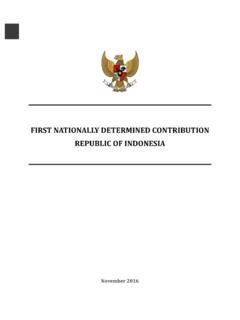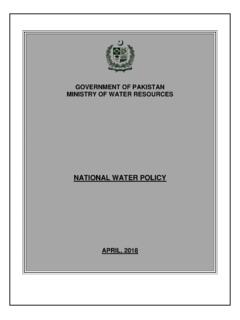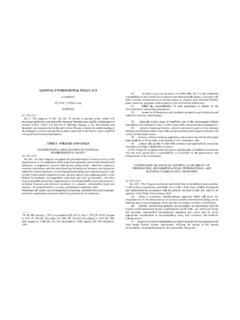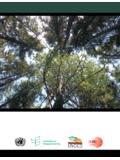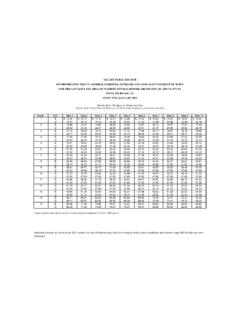Transcription of Malawi National Resilience Strategy 2018-2030
1 I GOVERNMENT OF Malawi National Resilience Strategy (2018 2030) Breaking the Cycle of Food Insecurity in Malawi DEPARTMENT OF DISASTER MANAGEMENT AFFAIRS(unofficial copy) i Table of Contents i iii iv v vi vii viii ix Acronyms Key data Statement by the President Joint Ministerial Statement Statement by Development Partners Acknowledgements Preamble 1. INTRODUCTION1 Situational Analysis 2 Climate Resilient Development 4 Nutrition for Resilience 6 Development Humanitarian Nexus 8 Inclusive Growth for Resilience 10 AND GUIDING PRINCIPLES12 Defining Resilience 12 Vision Statement 12 Guiding Principles 12 Common Programme Framework 13 Theory of Change 16 Linkage to MGDS III and Integration across NRS Pillars 19 Beneficiary Targeting 22 FRAMEWORK25 National policy Coherence 25 International and Regional Frameworks 30 PILLARS AND COMPONENTS35 Pillar 1: Resilient Agricultural Growth 36 Sustainable Irrigation Development 38 Drought Mitigation 38 Agricultural Diversification 39 Market Development, Value Addition, and Exports 39 Strategic Grain Reserve 40 Farm Input Subsidy Programme 40 Pillar 2.
2 Risk Reduction, Flood Control, and Early Warning and Response Systems 44 Mainstreaming DRM Across Sectors and Administrative Levels 43 Flood Prevention and Control 44 Early Warning Systems 44 Disaster Preparedness, Response, and Recovery 45 ii Pillar 3: Human Capacity, Livelihoods, and Social Protection 47 Overview of the MNSSP II 48 Consumption Support 50 Resilient Livelihoods 52 Shock-Sensitive Social Protection 54 Nutrition 55 Pillar 4: Catchment Protection and Management 60 Integrated Watershed Management 61 Forest and Landscape Restoration 61 Payment for Ecosystem Services 62 Sustainable Energy 62 Forest-based Enterprises 64 COORDINATION AND IMPLEMENTATION FRAMEWORK66 Coordination and Alignment Principals 66 NRS Implementation Framework 67 National NRS Governance Committee 67 National , Disaster Preparedness, and Relief Committee 67 National , Disaster Preparedness, and Relief Technical Committee 67 Joint NRS Sub-Committees / Working Groups 67 NRS Secretariat 67 District Councils and Sub-Committees 68 Beneficiary and Civil Society Groups 68 AND EVALUATION FRAMEWORK71 MANAGEMENT73 iii LIST OF FIGURES.
3 Risk of Drought and Flood2 in Humanitarian Responses to Shock-Affect Populations5 Rates in Malawi7 Food Insecurity and Stunting9 Shocks and Reducing Fiscal Deficits9 of Shocks by District10 Theory of Change18 Households Towards Resilience23 Resilience Strategy : Resilient People, Agriculture, and Environment26 Resilience Strategy : Pillars and Components35 to Nutrition Pathways37 II Thematic Areas50 for Social Support and Protection Programmes51 SUN Implementation Framework57 & Land Restoration Priorities62 Risk & Soil Loss62 Exposure, Drought, and Poverty63 Implementation Arrangements68 LIST OF TABLES: Common Programme Framework14 Integration Matrix20 Geographical Coverage21 Indicative Interventions24 between NRS and SDGs31 Outcomes of Pillar 141 Outcomes of Pillar 246 Outcomes of Pillar 359 Outcomes of Pillar 465 Governance Framework69 Risk and Mitigation Measures73 ANNEXES: I.
4 Preliminary NRS Common Programme Framework74 II. Monitoring and Evaluation Framework75 i Acronyms ACE Agriculture Commodity Exchange ADD Agriculture Development Division ADDRMO Assistant District Disaster Risk Management Officer ADMARC Agricultural Development and Marketing Corporation AGYW Adolescent Girls and Young Women ARC African Risk Capacity ASWAp Agriculture Sector-Wide Approach AIDS Acquired Immune Deficiency Syndrome CMFEWS Community-based Flood Early Warning Systems CCA Climate Change Adaptation CCIP Climate Change Investment Plan CSA Climate Smart Agriculture CoBRA Community Based Resilience Analysis CPC Civil Protection Committee CSO Civil Society Organization DADO District Agricultural Development Officer DC District Commissioner DCCMS Department of Climate Change and Meteorological Services DEC District Executive Committee DFID (UK) Department for International Development DNHA Department of Nutrition, HIV and AIDS DoDMA Department of Disaster Management Affairs DoE Department of Energy DoF Department of Forestry DoI Department of Irrigation DNHA Department of Nutrition and HIV and AIDS DP Development Partner DPD District Planning and Development Officer DRR Disaster Risk Reduction DWR Department of Water Resources EAD Environmental Affairs Department EPA Extension Planning Area EU European Union EWS Early Warning System FAO Food and Agriculture Organization FAW Fall Army Worm FEWS Flood Early Warning System FISP Farm Input Subsidy Programme GBI Green Belt Initiative GDP Gross Domestic Product GIS Geographic Information System GIZ Deutsche Gesellschaft f r Internationale Zusammenarbeit (GIZ)
5 GmbH GoM Government of Malawi HEA Household Economy Approach HIV Human Immunodeficiency Virus IF Irrigation Fund IFAD International Fund for Agricultural Development ILO International Labour Organization IMPIF Irrigation Master Plan and Investment Framework IWD Integrated Watershed Development IPC Integrated Phase Classification LDF Local Development Fund MALCID Malawi Committee on Irrigation and Drainage MDA Ministry, Department, Agency MGDS Malawi Growth and Development Strategy MIB Malawi Irrigation Board MK Malawi Kwacha MNSSP Malawi National Social Support Programme MoAIWD Ministry of Agriculture, Irrigation, and Water Development MoEST Ministry of Education, Science and Technology MoFEP&D Ministry of Finance, Economic Planning and Development MoHP Ministry of Health and Population MoITT Ministry of Industry, Trade, and Tourism MoGCDSW Ministry of Gender, Children, Disabilities and Social Welfare MoLGRD Ministry of Local Government and Rural Development MoLHUD Ministry of Lands, Housing, and Urban Development MoTPW Ministry of Transport and Public Works MNEP Malawi National Energy policy MoNREM Ministry of Natural Resources, Energy.
6 And Mines MRC Malawi Red Cross MT Metric tons MVAC Malawi Vulnerability Assessment Committee NA New Alliance for Food Security NAIP National Agriculture Investment Plan NCCMP National Climate Change Management policy NCIC National Construction Industry Council NDPRC National Disaster Preparedness and Relief Committee NES National Export Strategy NFI Non-food Item NFRA National Food Reserve Agency NGO Non-Governmental Organization NIP National Irrigation policy NMSNP National Multi-Sectoral Nutrition policy NRS National Resilience Strategy NSO National Statistics Office NWP National Water policy PDNA Post-Disaster Needs Assessment PPP Public-Private Partnership PWP Public Works Programme SCTP Social Cash Transfer Programme SGR Strategic Grain Reserve SMP School Meals Programme TA Traditional Authority UBR Unified Beneficiary Registry UNDP United Nations Development Programme UNICEF United Nations Children s Fund 2 UP United Purpose USAID United States Agency for International Development VSL Village Savings and Loan WFP World Food Programme WB World Bank iii KEY DATA Title Malawi National Resilience Strategy (NRS): Breaking the Cycle of Food Insecurity Duration Phase I: 2018 2022 / Phase II: 2023 2028 / Phase III: 2029-2030 Vision Statement A country free of chronic vulnerability, and food, and nutrition insecurity, where sustainable economic development creates opportunities for everyone, and where people are resilient to economic and environmental shocks that affect their lives and livelihoods.
7 Overall Outcome Malawi is resilient to economic and environmental shocks and able to sustain inclusive growth, food and nutrition security, and improved well-being for all Malawians. The country has transitioned from recurrent humanitarian appeals to protective and productive investments in complementary interventions targeting chronically food insecure and poor households, supported by effective institutional coordination and multi-sectoral planning and implementation. Combined Pillar Impacts agricultural sector into an engine for shared economic prosperity, food security and poverty reduction; climate-resilient infrastructure, and enhanced climate-adaptation capacity of all stakeholders, through better access to climate information and early warning and response mechanisms that safeguard lives and livelihoods from shocks; reduction in the number of chronically food insecure households by scaling up access to predictable social support services, complementary livelihood packages, nutrition services, and expanded access to National programmes; in stunting of children <5 years of age through well-coordinated and high-impact multi-sectoral investments in nutrition-specific and nutrition-sensitive interventions.
8 Public, private and community partnerships to safeguard Malawi s natural resource endowments and ecosystems that contribute to social and economic prosperity; National and devolved government institutions, civil society, and private sector actors to adopt effective and accountable practices that prevent, mitigate, and respond to disasters, and promote long-term development; women s empowerment through cross-cutting strategies and measurable (all disaggregated by gender and age) a)Percentage reduction in extreme )Prevalence and depth of food insecurity (measured by Food Insecure Experience Scale (FIES).c)Reduction in number of people requiring emergency food and cash assistance as a result of flood,drought, and other emergencies, disaggregated by )Return on investment, money and livelihoods saved from averting food and nutrition crisis compared topast )Percentage of poor Malawians graduated from the social safety net transfers through protective andproductive asset creation and cash transfers, disaggregated by )Percent of poor Malawians living above the poverty line who do not backslide into poverty, disaggregated by )Percentage annual growth in agriculture )Percentage increase in availability, access, quality, and affordability of recommended food groups inlocal and regional )Percent increase in hectares managed through integrated watershed development practices (protectiveforest cover in priority catchments).
9 J)Annual reduction in percent of children <5 years of age )Percent reduction in anaemia in children <5 years of age and women of childbearing )Percent change in Women Empowerment in Agriculture (WEAI) Score (mean empowerment gap).m) National and devolved government institutions implement coordinated multi-sectoral plans supportingNRS )Optimal funding levels for multi-sectoral programmes and sector-specific programming in NRS priorityareas are allocated by the GoM Treasury and Development Partners (priority areas defined duringimplementation)Target Areas and Population 319,000 ultra-poor, labour-constrained, and vulnerable households across all 28 districts. 15% of poor households in all 28 districts. Up to 50% of household population with lowest welfare status. Areas the most vulnerable to recurrent crisis based on multi-criteria mapping: priority drought-proneareas, catchments and flood hotspots, irrigation sites, degraded ecosystems, and non-grid connectedhouseholds without energy access.
10 Iv Statement by the President The National Resilience Strategy (NRS) represents a pivotal shift in the way our country will address poverty reduction, food and nutrition security, and inclusive resilient growth for all Malawians. For too many years the people of Malawi have cycled in and out of seasonal and multi-dimensional poverty. In 2016-17, over 40% of the population needed humanitarian assistance, which had devastating impacts on livelihoods, nutrition, and our progress to expand inclusive economic growth as outlined in the Malawi Growth and Development Strategy III. It is imperative that the GoM, its partners, and citizens reignite our ambitions and actions as we collectively deal with the increasing, more frequent, and rising severity of extreme weather events linked to climate change. Malawi s commitment to achieve the Sustainable Development Goals (SDGs), Agenda 2030, and Agenda 2063, remains steadfast.
